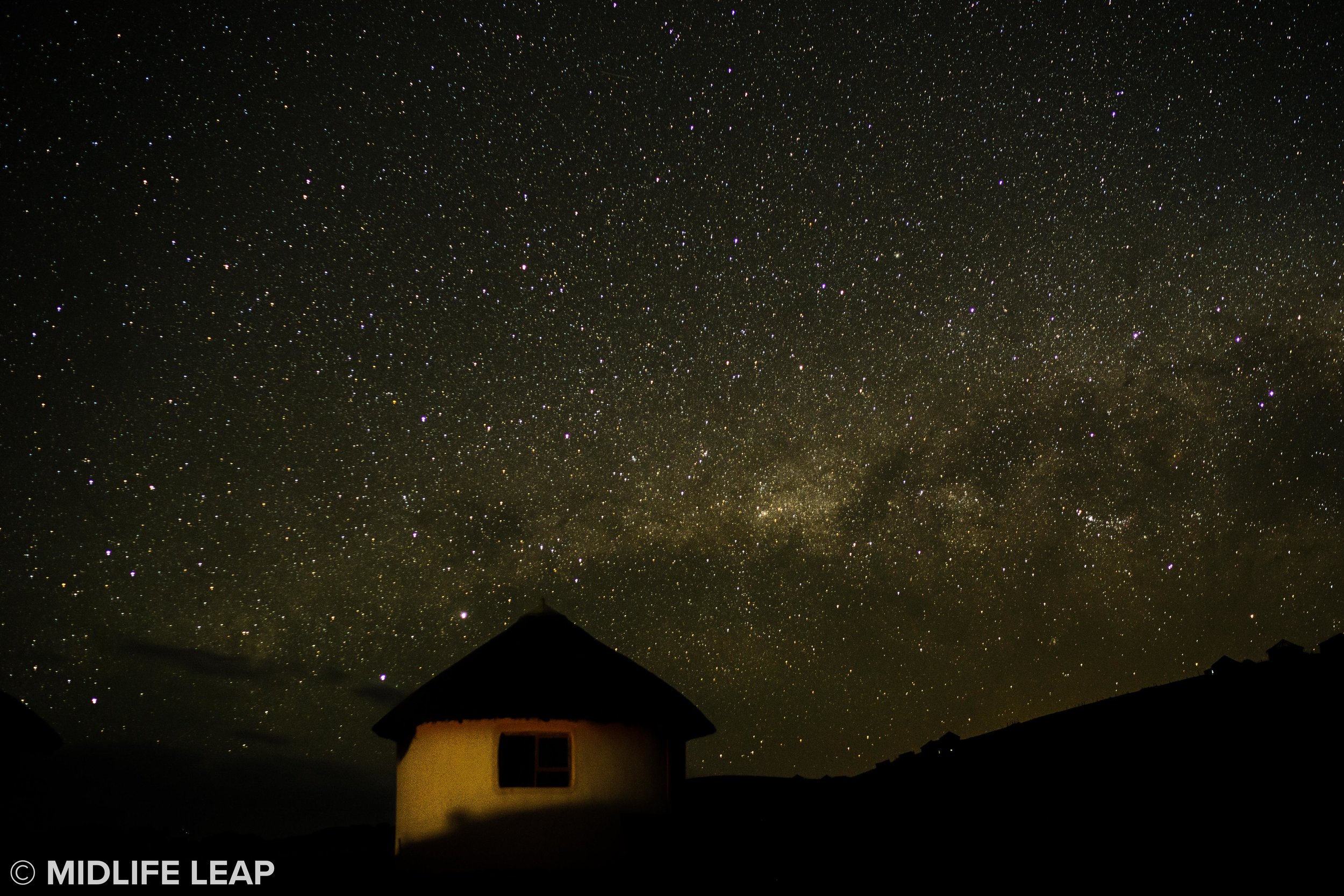How to Spend A Day in Montmartre
Paris, France
"An artist has no home in Europe except in Paris"
Sitting high above the city, Paris’ 18th arrondissement offers more than just spectacular views. Montmartre may have gained its present day reputation with films like Amelie, but this historic quintessential Parisian neighborhood once housed artists such as Degas, Monet, Picasso, and van Gogh (just to name a few) dating back to the late 1800s. So come along and take a walk through one of Paris’ most celebrated neighborhoods, and enjoy a day spent in this tiny village up on the hill.
We hope you find this guide useful!
Buy us a coffeeOkay so while no one in Paris would actually speak those words (and technically this is in Pigalle and not Montmartre), but the folks at Lulu White Drinking Club might. Why do you ask? Well, the infamous Madame of New Orlean’s Storyville is none other than Lulu White. This tale of two cities brings together the end of the century Pigalle with the lure and lust of New Orleans under one roof, an old brothel roof to be exact.
The team that brought you The Little Red Door now welcomes you to the Lulu White Drinking Club. Their beautifully crafted cocktail list is just one reason to let the desires of Lulu White draw you in. The music (of which they have the live kind on Tuesday evenings), the bartenders, and a chance to let your vices tempt you through the evening is the best night cap to this day that took us back to a time when artist roamed the hills of Montmartre, and absinthe was consumed on a regular basis.
(Click to See More on Lulu White Drinking Club)
It’s the year 1889 and some of Paris’ most iconic landmarks have opened, The Eiffel Tower, The Moulin Rouge, and La Mascotte. Okay, that may be a slight exaggeration, but, if you are sticking around to complete this Day in Montmartre, then dinner at La Mascotte is a no brainer. Celebrated for it’s famous seafood platters, La Mascotte has somehow remained a neighborhood favorite amongst a sea of tourist trap restaurants, where locals come to drink a cold glass of white wine, take down some oysters, and gossip around the beautiful bar. It is a local institution that will leave you feeling more French than you believed possible.
If it’s a nice night, definitely grab a table outside along the busy streets of Rue Abbesses. Otherwise, try to snag one of the coveted tables in the front of the restaurant. Our favorite is the reserved seat for the drag queen who only wears blue, Michou (even her chair is blue!). Start off with oysters and finish with the liter of mussels. This is the perfect way to end a beautiful day in Paris’ most risqué and vibrant neighborhoods.
(Click to See More on La Mascotte)
If you didn't feel like climbing up those stairs back to Sacré-Coeur then why not indulge in a little happy hour at Un Zèbre à Montmartre. I know, why are we sending you here? Well didn’t anyone teach you to never judge a book by it’s cover? Un Zèbre à Montmartre has one of the best happy hours in this tourist filled neighborhood and (bonus points) one of my favorite spots to enjoy an Aperol Sprtiz (they also have a killer beef tartare among other delicious items on their menu). Rue Lépic is haunted with tourist traps but this unpretentious, purple and white awning bistro, truly feels like finding a zebra among a herd of gazelles (that analogy didn't work did it?).
(Click to See More on Un Zèbre à Montmartre)
In how many languages can you say, “I Love You?” Well if it’s not 250 then The Wall of Love has got you beat my friend! That’s right, the City of Love (yeah yeah, officially the City of Light) has a Wall of Love, because shouldn’t all cities celebrate love in 250 languages? Stretching over 430 sqft, the phrase, ‘I love you’ is featured across 612 tiles of enameled lava 311 times. Try to find all the languages you know, or at least the French and English ones!
(Click to See More on Wall of Love)
If all that walking made you hungry, well then by all means, pop into Le Grenier à Pain. Here is your chance to compare that morning baguette to the 2015 first prize winner of The Best Baguette in Paris. This isn’t the first time this quaint boulangerie has won this award (which also means providing the current French president and the Elysées Palace with bread for an entire year).
If you are planning on heading back up to Sacré-Coeur for sunset, we suggest picking up a Baguette Tradition, heading next door for some cheese, and popping across the street at a Nicholas for a bottle of wine because who doesn’t love an impromptu picnic in Paris? We know we do!
But before you start making the climb, grab a dessert (none will disappoint) and walk down the street to the famous I Love You wall.
(Click to See More on Le Grenier à Pain)
Let's continue that walk down memory lane. As we’ve mentioned before, Montmartre was the hangout spot during the Belle Époque so we figured it may be fun to walk along these quintessential winding cobblestone streets and take a step into the past. After leaving Place du Tertre, make your way up to the Musée de Montmartre, which was where many famous writers and artists called home back in the day. From there walk down to Le Bateau-Lavoir, the once famous studio, home, and unofficial club for many of the early 20th century artists, writers, and bohemians. A fire destroyed everything but the façade in May 1970, but it was completely rebuilt eight years later.
From here, walk back up to Rue Lepic from Rue d’Orchampt and on your left hand side you will see the home of Dalida (11B Rue d’Orchampt). It’s the one with the red roof and light brown exterior. You can’t visit inside the home but you can imagine Dalida roaming around her cherished neighborhood, shopping and eating on this very street. If you turn right on Rue Lepic you can find La Cave de Gaston Leroux, a small wine bar which is still run by the great grand daughter of the author of the Phantom of the Opera.
Turn around and continue down Rue Lepic and you will see the famous Moulin de la Galette restaurant topped by the original Moulin Radet. Like the vineyards, Montmartre used to have many functioning windmills of which only two remain today, Moulin Radet and Moulin Blute-Fin, which is the only functioning windmill still standing in Paris. The windmills were purchased by the Debray family in the early 1800s where they made a brown bread, better known as galette (and if you haven’t had one yet in Paris, you should remedy that asap!). One last fun fact about the windmills, many of those famous artists we keep mentioning have showcased the Moulin de la Galette in their paintings, such as Renoir’s, Bal du moulin de la Galette.
As you curve around and down the street, you will eventually come by 54 Rue Lepic on your left hand side. This was the home of van Gogh, where he lived with his brother, Theo, until 1888. Continuing on, you will follow Rue Lepic which will turn right. You should see a busy cafe on the corner. You may recognize it but if not, Cafe des Deux Moulins is the famous Amélie cafe. If you are a fan, it maybe worth stopping by. You will undoubtedly be elbow to elbow with tourists but you can definitely enjoy a drink and snap a few pictures.
Well that’s it for your mini tour through history along Rue Lepic! Hope you enjoyed it!
(Click to See More on Rue Lepic)
After leaving Sacre Coeur, it's time to peruse through Place du Tertre. Continue west of the church on Rue du Mont-Cenis, and you can't miss it. Yes it will be packed with tourist. Yes people will try to sell you things. But, you are already in the neighborhood so why not take a stroll around the block. Try to imagine what it must have been like back in the day, when artists would set up around the perimeter of the square just like you see in front of you. Dali, Renoir, and Picasso did live right around the corner afterall...
(Click to See More on Place du Tertre)
Well this is what you've been waiting for, the climax of the day! From The Hardware Society, continue down Rue du Cardinal Dubois, and you'll land right in front of Sacre Coeur and all her beauty!
Okay so you don’t actually have to wear your Sunday best for this experience, but we are finally visiting that church we keep talking about. The Basilica of the Sacred Heart of Paris, better known as just Sacré-Coeur, is a Roman Catholic church which sits at the summit of the butte Montmartre and is the highest point in the city. It can also be accessed by a Funicular (which will only cost you a metro ticket) but thankfully on our day, since you have already climbed to the top, you will reach the church by walking downhill. Whoo hoo!
Even if you don’t enter the actual Basilica, you will still want to admire the view from the steps of Sacré-Coeur. While you’re up there, try to pick out some of Paris’ famous landmarks. Hint, you won’t see the Eiffel Tower from here but you can spot another very famous church and just beyond that, the Pantheon. If you want to see the Eiffel Tower, walk past the top of the Funicular (so it’s on your left) and follow the fence. From here, if you peak between the iron posts, you can see the Eiffel Tower across the rooftops.
And if you are still craving more views, we have an opportunity for you to return to the steps of Sacré-Coeur during magic hour. Yes you’ll have to climb some stairs, but that baguette and bottle of wine at the top may help ease the pain.
The Basilica is open seven days a week and entrance is free. If you do wish to visit the Dome, please note that there are 300 steps and no lift for the dome and it requires an entrance fee (they vary so you need to check with the Basilica). As always, this is a very populated area so be mindful of your belongings.
(Click to See More on Sacré-Coeur)
After leaving Le Clos Montmartre, head down Rue Saint-Vincent around to Square Marcel Bleustein Blanchet. Enjoy a nice view there, then head down the stairs and take a right onto Rue Lamarck, and get ready for lunch. You've earned it!
What happens when you take an already successful Melbourne restaurant and open up a Parisian outpost? You get an unforgettable brunch experience that's what! The Australian husband and wife team brought their success from Down Under to the top of Sacré-Coeur and boy will you be thanking us for including this lunch spot on this Day.
I hope you worked up an appetite tackling those hills and climbing those stairs because you will want to eat everything on this menu. Some of our favorites are the baked eggs (both of them) and the fried brioche. But you also have the lobster benedict and oh my gosh how could we forget about the roasted mushrooms. SO MANY CHOICES. Whatever you do, make sure you save room for coffee (Melbourne Padre) and dessert, because I promise you, I still have dreams about that brownie (and its gluten free, if you care about that sort of thing).
If you happen to be here on the weekend, be prepared the wait but don’t let that turn you away. It’s worth every minute.
(Click to See More on The Hardware Societé)
After leaving Place Dalida, you can continue up Rue de l'Abreuvoir until you hit La Maison Rose, and then take a left at Rue des Saules which should put you right at one of the hidden vineyards in Paris, Close Montmartre.
Almost lost in the 1930s, Clos Montmartre covers a 1,556 sqmt sloping corner of Montmartre yielding 1500 half liter bottles of red wine annually.
Here is a little history lesson for you. The hills of Montmartre were once covered with vineyards dating back to when the Romans constructed a temple dedicated to none other than the god of wine, Bacchus. During the French Revolution, everything was all destroyed, included a Benedictine abbey, but the vineyard was spared (only to be destroyed in the early 20th century to phylloxera). However, thanks to a group of dedicated local artists, Clos Montmartre was brought back to life and later saved from the urbanization of Montmartre. It was officially renewed in 1933 and is now the oldest functioning vineyard in Paris.
The wine, however, isn’t exactly your bordeaux's and rosés that often come to mind when you think of French wines, but more of a collectors items with labels designed by local artists. Each year, the bottles are auctioned off for charities during the famous five-day festival, the Fête des Vendanges. Currently funded by the Mairie de Paris, Clos Montmartre is now one of 150 vineyards in the Paris region. If you happen to be visiting during October, don’t forget to check out the dates for the festival, you won’t want to miss it!
(Pst. Since you're in the hood, make sure to check out Le Lapin Agile, a famous Montmartre Cabaret visited by the struggling artists of it’s time such as Picasso and Utrillo. It should be right behind you!)
(Click to See More on Le Clos Montmartre)
After continuing up Rue Caulaincourt, you’ll find yourself in a little square (Square Joël Le Tac to be exact). From here, take Rue Girardon and continue up the stairs. Welcome to Place Dalida, one of our favorite corners of Montmartre.
Remember when we talked about the famous French icon back at the cemetery? Well here she is again as Montmartre was where the Diva of French music lived up until her death. On the 10th anniversary of her death, the city of Paris honored her with Place Dalida complete with a bronze (to scale) bust of the beautiful singer and actress.
Born in Cairo, Egypt, Dalida was an Italian-Egyptian-French singer who spent most of her career in France. She performed and recorded music in 11 languages and while her glamours life ended tragically with suicide, she is still known today as on of the biggest French singing icons in history.
If you look through the bust of Dalida’s eyes, you will look out onto Rue de L’Abreuvoir with a view of Sacré-Coeur in the distance. C'est magnifique, non?
(Click to See More on Place Dalida)
Rue Caulaincourt is one of our favorite streets in Paris. Other than holding some precious memories for us, we love this beautiful, curvy, tree-lined Parisien street. It just has that “je ne sais quoi” about it. And even better, Gontran Cherrier decided to open up his first boulangerie right here on Caulaincourt.
There may be a line but don’t worry, the sights and smells from this tiny corner shop will ease the pain of queuing. They offer a daily formule menu with a "p'tit dejuner" or you can order a la carte (ie everything your heart desires). Our recommendation? Go for a croissant, a kouignamman, and one of Gontran Cherrier's famous breads. And don’t forget coffee. Always coffee. (ps. we will be swinging by another famous boulangerie later in the day so this could be a fun time to take note of which baguette and croissant you think is best!)
(Pst. When you leave the boulangerie, you can catch a tiny glimpse of the Eiffel Tower when you face the direction of the cemetery!)
(Click to See More on Gontran Cherrier)
From Moulin Rouge, continue down Blvd. de Clichy following the signs for Cimetière de Montmartre. While it may not be the most famous cemetery in Paris (that award goes to Père Lachaise), the Montmartre Cemetery is definitely worth a visit during this Day. Paris has a pretty fascinating history as far as cemeteries go and this one doesn’t fall short.
Initially known as 'The Cemetery of the Large Quarries' (due to it's location beneath Rue Caulaincourt in an abandoned gypsum quarry), the Montmartre Cemetery was originally used as a mass grave during the French Revolution. Today, this is the resting place for many famous artists including, Edgar Degas, and the famous singer, Dalida (who will make another appearance on this Day later on).
(Click to See More on Montmartre Cemetery)
When you think of Montmartre, the first landmark that comes to mind is most likely Sacré-Coeur, but before you start climbing up the hill to the beautiful basilica, let’s make a pit stop somewhere a little less holy: The Moulin Rouge.
While it may not be the original building (it burned down in 1915) and (in our opinion) somewhat underwhelming at first glance, the Moulin Rouge does hold some historical value. It is best known as the birthplace of the French can-can dance and is still decorated in the same romantic feel as the original dating back to the late 1800s. Paris is no stranger to the late night cabaret show, but this famous red windmill is definitely the most popular of the bunch. If you plan on doing more than just snapping a picture, make sure to grab a reservation in advance so you can-can enjoy a spectacular night to remember!
(Pst. If you are taking the metro, our recommendation is to take the metro line #2 to Blanche)
(Click to See More on Moulin Rouge)
Craving more adventure? Check out these other Days in Paris
And look, there's more!
Locations Map
Sitting high above the city, Paris’ 18th arrondissement offers more than just spectacular views. Montmartre may have gained its present day reputation with films like Amelie, but this historic quintessential Parisian neighborhood once housed artists such as Degas, Monet, Picasso, and van Gogh (just to name a few) dating back to the late 1800s. So come along and take a walk through one of Paris’ most celebrated neighborhoods, and enjoy a day spent in this tiny village up on the hill.











